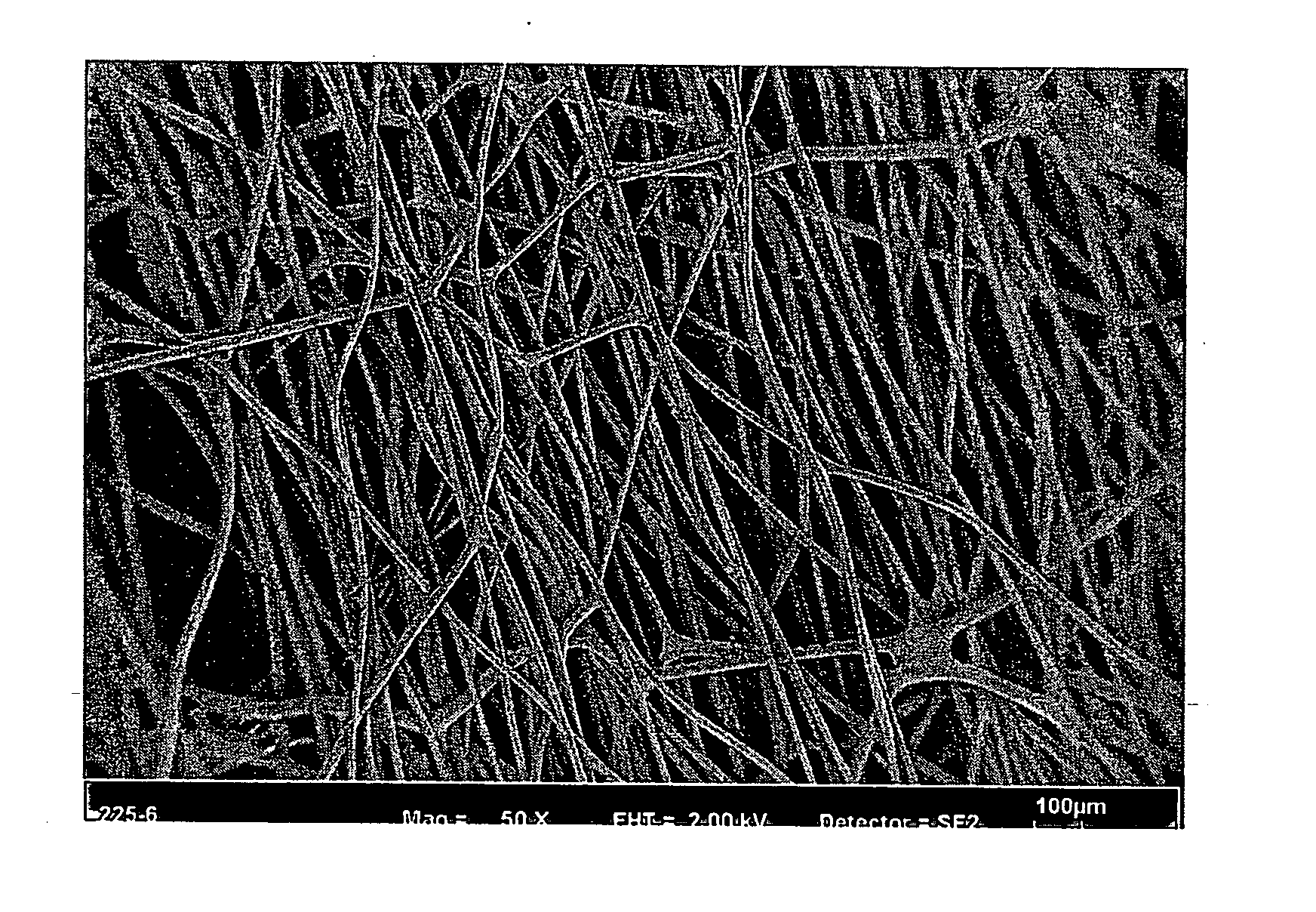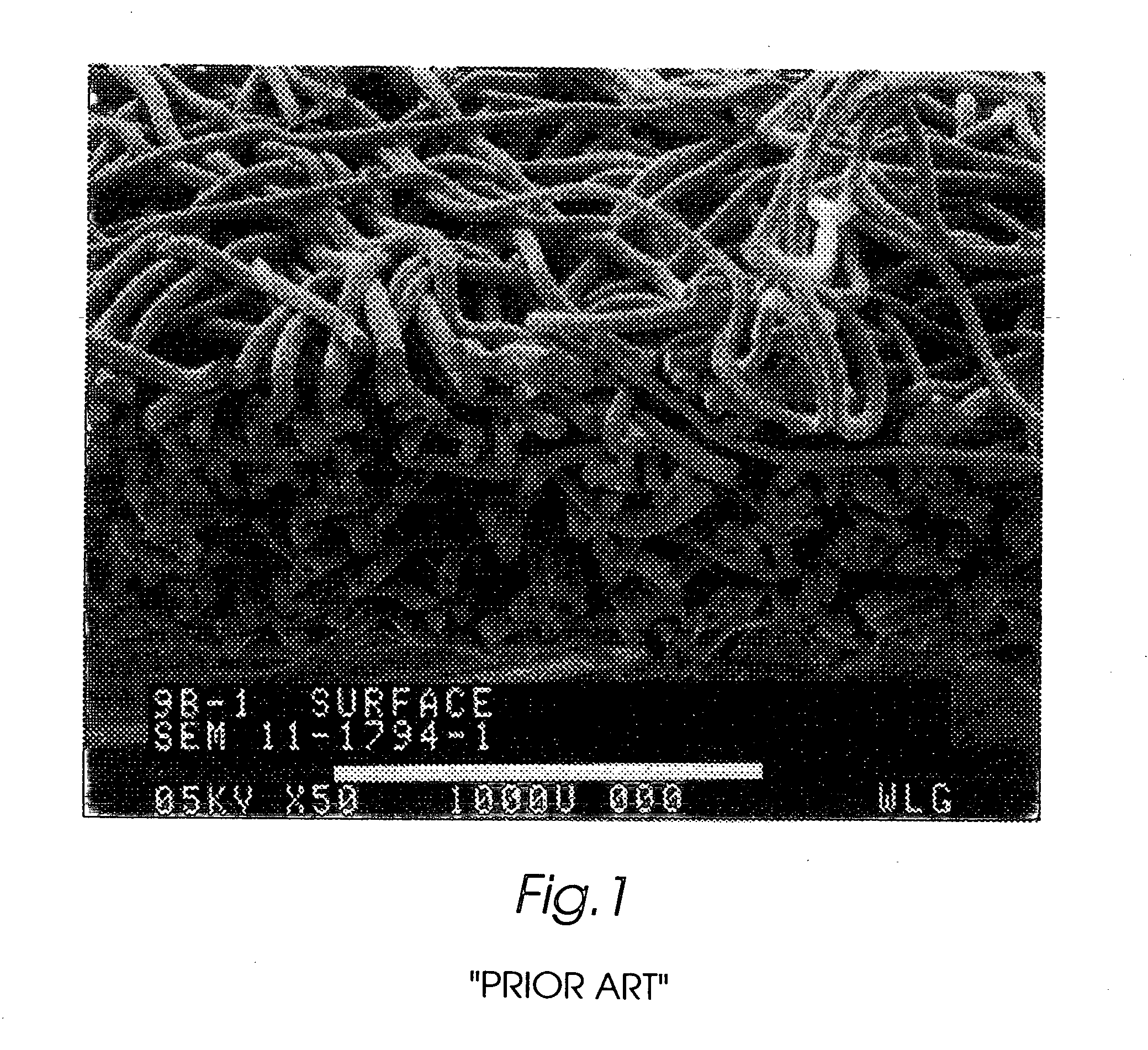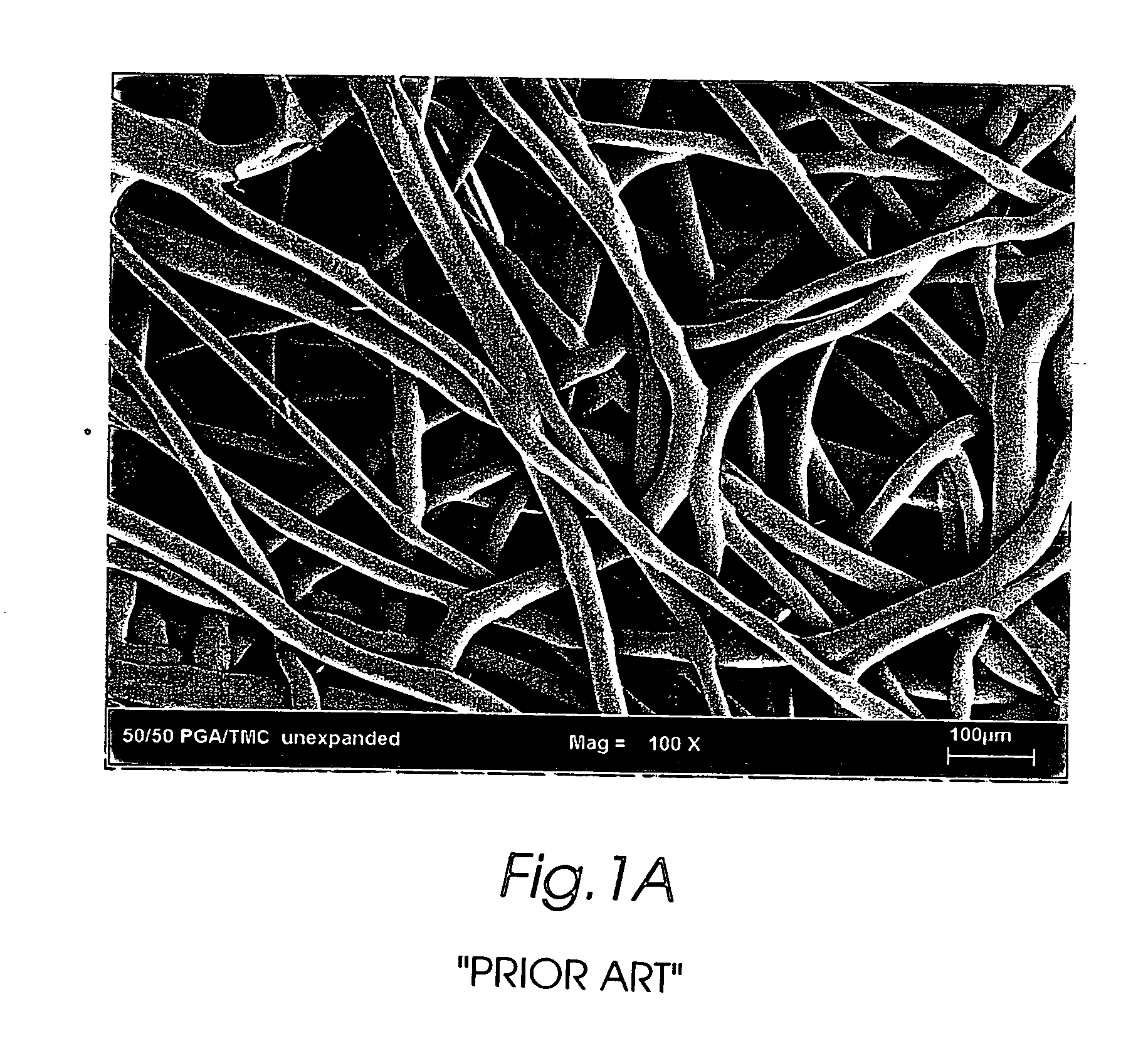Composite self-cohered web materials
- Summary
- Abstract
- Description
- Claims
- Application Information
AI Technical Summary
Benefits of technology
Problems solved by technology
Method used
Image
Examples
example 1
[0077] This example describes formation of an article of the present invention. Initially, an unannealed, non-woven, self-cohered polymeric precursor web was formed. The precursor web material was heated slightly and subjected to stretching in a single, or uniaxial, direction to increase the porosity of the web material. The highly porous self-cohered web material was then set with heat.
[0078] The precursor web material was formed from a 67% poly(glycolide) and 33% poly(trimethylenecarbonate) (w / w) segmented triblock copolymer (67% PGA:33% TMC). The copolymer is available in resin form from United States Surgical (Norwalk, Conn., US), a unit of Tyco Healthcare Group LP. This polymer is commonly referred to as polyglyconate and has historically been available through the former Davis & Geck (Danbury, Conn.). A typical 67% PGA:33% TMC resin lot was characterized previously by Hayes in U.S. Pat. No. 6,165,217, which is incorporated herein by reference. The process of characterizing th...
example 2
[0098] In this example, precursor webs produced using the various belt speeds and transverse expansion ratios described in Example 1 were obtained for a variety of web densities and stretch, or draw, ratios. Following processing, scanning electron micrographs (SEM) were generated of representative areas of this embodiment of the present invention. Some characteristics of the stretched web of the present invention and the filaments comprising the web were quantified as follows.
[0099] The cross-sectional diameter of the stretched filaments in each web material of the present invention was determined by visually examining the SEMs. In each SEM, fifty (50) stretched filaments were randomly chosen and the diameter of a cross-section of each filament was measured. The cumulative results of these filament cross-sectional diameters is contained in Table 3 and summarized in FIGS. 6 and 7. The stretch ratios are expressed as multiples of “X.” For example, “
[0100]0X” refers to unstretched pre...
example 3
[0106] As a result of stretching the material described in Example 1, both the amount of polymeric material per unit area (area density) and amount of polymeric material per unit volume (volume density) were reduced. A precursor web (produced at a belt speed of 0.67 feet / minute (20.4 cm / minute)) was further processed in an oven set at 100° C. for 25 minutes to completely anneal, or “heat-set,” the web material.
[0107] The unannealed, unstretched, self-cohered precursor web material was substantially similar to the web material disclosed in the '217 Patent. A heat-set version of the precursor web material was determined to have an area density of approximate 23 mg / cm2 and a volume density of approximately 0.16 g / cc. Commercially forms of this type of web are available from W. L. Gore & Associates, Inc., Flagstaff, Ariz., under the tradenames GORE Bioabsorbable SeamGuard and GORE Resolut Adapt LT. Each of these unstretched web materials has an area density of 9.7 mg / cm2 and 8.4 mg / cm2...
PUM
| Property | Measurement | Unit |
|---|---|---|
| Temperature | aaaaa | aaaaa |
| Temperature | aaaaa | aaaaa |
| Temperature | aaaaa | aaaaa |
Abstract
Description
Claims
Application Information
 Login to View More
Login to View More - R&D
- Intellectual Property
- Life Sciences
- Materials
- Tech Scout
- Unparalleled Data Quality
- Higher Quality Content
- 60% Fewer Hallucinations
Browse by: Latest US Patents, China's latest patents, Technical Efficacy Thesaurus, Application Domain, Technology Topic, Popular Technical Reports.
© 2025 PatSnap. All rights reserved.Legal|Privacy policy|Modern Slavery Act Transparency Statement|Sitemap|About US| Contact US: help@patsnap.com



